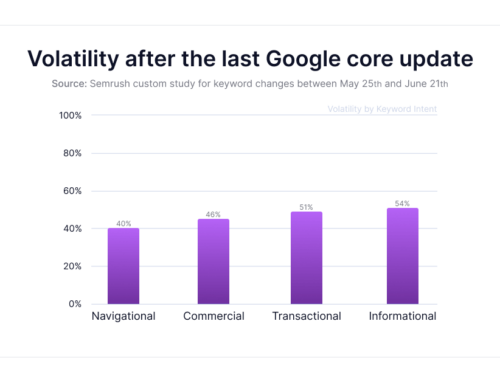Developing ChatGPT poses a diverse range of formidable challenges for engineers and researchers alike. Navigating these hurdles is essential to refining and enhancing the performance of this cutting-edge conversational AI model. From addressing issues related to bias and potential harmful behavior, to striking the right balance between helpful and overconfident responses, the development journey of ChatGPT requires meticulous attention to detail. Furthermore, ensuring that the model understands and respects user instructions, handles ambiguous queries gracefully, and avoids generating misleading or false information represents additional hurdles in this highly complex task. Responding to these multifaceted challenges is crucial in order to deliver a safe, robust, and reliable conversational AI system capable of enriching the lives of its users.
Language Understanding and Generation
Ambiguity and Context
One of the primary challenges in developing ChatGPT is dealing with the inherent ambiguity of natural language. Humans often rely on contextual cues to understand the meaning of a statement, but training a language model to do the same is a formidable task. Context is essential for accurate language understanding and generation, as words and phrases can have multiple interpretations based on the surrounding context. Incorporating a deep understanding of context into ChatGPT is crucial to ensure that it can comprehend user inputs accurately and generate appropriate responses.
Natural Language Understanding
Another challenge is developing a robust natural language understanding (NLU) system for ChatGPT. NLU involves processing and interpreting user inputs to derive their intended meaning. This process involves not only extracting explicit information but also understanding implicit meaning, intent, and emotions. Accurate NLU is essential for ChatGPT to comprehend user queries accurately and provide relevant responses. Developing an NLU system capable of accurately understanding the nuances of diverse user inputs is a complex task that requires extensive training and testing.
Natural Language Generation
Natural language generation (NLG) is the process of generating coherent and contextually appropriate responses. It involves selecting the most suitable words, phrases, and structures to convey the intended meaning effectively. Developing a robust NLG system for ChatGPT is a challenge due to the need for generating responses that are not only grammatically correct but also coherent, engaging, and contextually relevant. The model must be trained to generate responses that adhere to the conversation’s flow, follow social conventions, and reflect appropriate levels of formality or informality, depending on the context.
Ethics and Misuse
Responsible AI Development
Responsible AI development is a crucial aspect of building ChatGPT. Ensuring transparency, accountability, and fairness in the system’s behavior is of utmost importance. Developers must carefully consider the ethical implications of the AI system and proactively address potential biases, harmful outputs, or unintended consequences. Regular evaluation and monitoring are necessary to identify and rectify any ethical issues that may arise during the system’s usage.
Preventing Biases and Harmful Outputs
A critical challenge in developing ChatGPT is preventing biases and harmful outputs. Language models can inadvertently learn biases present in the training data, leading to biased or offensive responses. Developers must actively work towards reducing these biases and ensuring a diverse range of perspectives is included in the training process. Implementing strict guidelines and robust measures to filter out potentially harmful outputs is essential to ensure user safety and prevent any unintended negative impact.
Handling Sensitive Information
Protecting user privacy and handling sensitive information appropriately is of paramount importance in developing ChatGPT. The model must be designed to respect user confidentiality and ensure that sensitive information shared during conversations remains secure. Implementing stringent data protection measures, such as encryption and access control, can help ensure that user data is handled responsibly and in compliance with privacy regulations.
User Safety
Filtering Inappropriate Content
One of the challenges in developing ChatGPT is implementing effective content filtering mechanisms to prevent the generation of inappropriate or offensive content. ChatGPT must be trained to recognize and avoid generating responses that contain hate speech, explicit content, or offensive language. Employing a combination of rule-based filtering and machine learning techniques can help mitigate this challenge and ensure a safer user experience.
Real-Time Monitoring
Real-time monitoring is essential to identify and address any potential safety concerns that may arise during interactions with ChatGPT. Implementing an efficient monitoring system that can detect and flag harmful or inappropriate content can help prevent user exposure to harmful outputs. Continuous monitoring allows for timely intervention and ensures that any issues are addressed promptly.
Blocking Malicious Use
Preventing the malicious use of ChatGPT is a critical challenge. There is a risk that individuals may attempt to exploit the system to spread misinformation, manipulate others, or engage in unethical behaviors. Developing robust mechanisms to identify and block such malicious activities is crucial to safeguard users and maintain the integrity of the platform. The system should be equipped with the ability to detect and mitigate any attempts at misuse in real-time.
Retaining Consistency and Coherence
Maintaining Context
Maintaining context throughout a conversation is vital for ChatGPT to provide coherent and meaningful responses. However, keeping track of long and complex dialogues presents a challenge. To address this, developers can explore techniques such as memory-based architectures or mechanisms to explicitly capture and utilize conversational history. Ensuring that ChatGPT can accurately refer to past statements, recall relevant information, and maintain a coherent dialogue flow is crucial to enhance user experience.
Handling Disconnected Responses
Another challenge in language generation is the risk of generating disconnected responses that do not appropriately address the user’s query or contribute to the conversation. It is essential to train ChatGPT to recognize and rectify these disjointed responses by incorporating techniques that prioritize relevance and coherence. Employing reinforcement learning, augmenting training data with human feedback, and fine-tuning the model can help improve the system’s ability to generate contextually appropriate and coherent responses.
Preserving Nuance
Preserving the nuance of user queries and responses is crucial to maintaining effective communication. ChatGPT should be developed to capture and understand subtle nuances, emotions, and intentions conveyed by users. This requires extensive training with diverse datasets that encompass a wide range of conversational styles and cultural contexts. Ensuring the system can respond appropriately to sarcasm, humor, or complex linguistic expressions is a significant challenge in achieving a high level of nuance preservation.
Controllable and Sensitive Outputs
Giving Users Control
Empowering users with control over ChatGPT’s behavior is essential to enhance user experience and address concerns related to bias, inappropriate content, or safety. Providing customizable settings, enabling users to define response characteristics, or offering options to filter content based on personal preferences can help users feel more in control of their interactions. Striking the right balance between user control and system responsiveness is a challenge that developers must tackle to create a user-centric experience.
Adapting to User Feedback
Developing mechanisms to adapt ChatGPT based on user feedback is vital for continuous improvement. Feedback from users helps identify weaknesses, biases, or inaccuracies in the model’s responses and enables developers to make necessary adjustments. Implementing feedback loops, gathering user ratings on response quality, and incorporating user preferences in model updates are crucial steps to ensure that the system evolves and improves over time.
Avoiding Social Manipulation
A key challenge in developing ChatGPT is preventing social manipulation through AI-generated content. There is a risk that individuals or groups may attempt to use AI models to spread misinformation, influence opinions, or manipulate public discourse. Building safeguards against such manipulation requires careful design and robust enforcement of ethical guidelines. Developers must ensure that ChatGPT’s outputs do not contribute to the amplification of misinformation or enable malicious actors to exploit the system for their gain.
Resource Consumption and Scalability
Computational Requirements
Developing ChatGPT with efficient computational requirements is essential to ensure scalability and accessibility. Resource-intensive models may limit the platform’s availability and increase the cost of deployment and maintenance. Optimizing the model architecture, exploring techniques like model compression, or leveraging distributed computing infrastructure can help reduce the computational requirements and make ChatGPT more accessible to a broader user base.
Training Time
Training a language model like ChatGPT is a computationally demanding task that requires significant time and resources. Reducing the training time while maintaining or improving model performance is a challenge in developing ChatGPT. Employing distributed training methods, leveraging hardware accelerators, or exploring techniques like transfer learning can help expedite the training process and enable faster model iterations.
Scaling to Handle Large User Base
Ensuring that ChatGPT can handle a large user base and maintain responsiveness is crucial for widespread adoption. Scaling the system to handle concurrent user interactions, without compromising performance or user experience, presents a challenge. Implementing efficient infrastructure, leveraging cloud computing platforms, and optimizing the model’s architecture for parallel processing can help address scalability concerns and ensure a smooth user experience even during peak usage.
Improving Accuracy and Reliability
Reducing Errors and Inaccurate Responses
Minimizing errors and inaccurate responses is a key challenge in developing ChatGPT. The model should be trained on diverse and high-quality datasets to improve its proficiency in understanding user inputs and generating appropriate responses. Continual refinement through feedback loops, fine-tuning using human-in-the-loop approaches, and regular evaluation can help identify and rectify common errors, improving the overall accuracy and reliability of ChatGPT.
Model Confidence and Uncertainty
Quantifying model confidence and uncertainty is crucial for ensuring transparency and reliability in ChatGPT’s responses. By providing confidence scores or uncertainty estimates alongside generated outputs, users can better understand the reliability of the system’s responses. Enhancing the model’s ability to assess its confidence level through methods like Monte Carlo dropout or Bayesian neural networks is a significant challenge in improving the system’s transparency and enabling users to make informed decisions based on the generated outputs.
Verifying Facts and Providing Sources
Developing a fact-checking mechanism is essential to prevent the dissemination of inaccurate or misleading information through ChatGPT. The model should be able to verify facts, provide reliable sources, or indicate when information may be speculative. Integrating external knowledge bases, leveraging fact-checking resources, and relying on community-driven verification can help ensure that ChatGPT generates accurate and trustworthy information. However, designing a system that strikes the right balance between providing factual information and promoting user autonomy is a challenging endeavor.
Domain-Specific Knowledge
Expanding Knowledge Base
Developing ChatGPT to possess a comprehensive and up-to-date knowledge base is crucial for addressing a wide range of user queries accurately. Expanding the system’s knowledge base to cover diverse domains and topics includes aggregating and curating relevant data from trusted sources. This process is a significant challenge, as it requires constant updates and maintaining the accuracy and timeliness of the information. Employing techniques like web scraping, knowledge graph construction, or integrating authoritative databases can assist in expanding the knowledge base.
Specific Domain Understanding
Developing ChatGPT with specific domain understanding allows for more specialized and accurate responses within specific fields or industries. However, achieving domain-specific expertise poses a challenge due to the vast and diverse nature of knowledge domains. Training the model on domain-specific datasets, fine-tuning using domain-specific terminology, or incorporating expert knowledge can help enhance ChatGPT’s understanding and ability to provide relevant and valuable information within specific domains.
Addressing Specialized Queries
Being able to handle specialized queries related to technical or niche subjects is a challenge for developing ChatGPT. These queries often require deep expertise and specific knowledge. Addressing this challenge requires training the system on highly specialized datasets, incorporating domain-specific ontologies, or collaborating with subject matter experts to ensure accurate and comprehensive responses. Balancing the need for domain expertise with maintaining a broad understanding of general knowledge within ChatGPT is a crucial aspect of this challenge.
Multilingual Support
Translating Different Languages
Providing multilingual support is a complex challenge in developing ChatGPT. ChatGPT must be able to comprehend and generate responses in various languages, each with its linguistic nuances and grammatical rules. Developing models that can effectively translate between languages while maintaining context, accuracy, and fluency is a significant endeavor. Training the system on diverse multilingual datasets, employing advanced machine translation techniques, and ensuring cross-lingual understanding are key steps in achieving multilingual support.
Cultural Nuances and Language Variation
Cultural nuances and language variations pose unique challenges when developing a multilingual ChatGPT. Different cultures and regions may have distinct linguistic customs, idiomatic expressions, or social norms that should be considered to ensure the system’s responses are culturally appropriate. Training the model on diverse cultural datasets, incorporating domain-specific cultural knowledge, and leveraging user feedback and community participation can help address these challenges and enhance cultural sensitivity in ChatGPT’s responses.
Handling Ambiguous and Contextual Phrases
The interpretation of ambiguous and context-dependent phrases varies across languages, making it challenging to develop a multilingual ChatGPT that accurately understands and generates responses to such inputs. Addressing this challenge involves training the model on a corpus that encompasses a wide range of ambiguous language constructs, idiomatic expressions, and cultural contexts in multiple languages. Employing contextual embeddings, leveraging cross-lingual word sense disambiguation techniques, and considering the target language’s specific linguistic characteristics are essential to achieving accurate and contextually appropriate responses.
Constantly Evolving Technology
Adapting to New Linguistic Patterns
Language evolves continuously, introducing new linguistic patterns, slang, or cultural references. One of the challenges in developing ChatGPT is ensuring that the model can adapt to these changes and remain up-to-date. Regularly updating the training data with recent language samples, monitoring linguistic trends, and integrating learning mechanisms that allow the model to adapt to evolving linguistic patterns are crucial steps in staying relevant and enhancing ChatGPT’s ability to generate coherent and contextually appropriate responses.
Incorporating Language Evolution
Not only does language evolve, but it can also differ between different communities, generations, or regions. Incorporating these variations into ChatGPT is a challenge that requires handling diverse linguistic influences. Developers must build a model that can intelligently adapt to various dialects, jargon, or socio-cultural variations. By training the model on diverse linguistic datasets and incorporating models that capture language variations, ChatGPT can provide more inclusive and contextually relevant responses across different linguistic communities.
Staying Up-to-Date with Advancements
The field of natural language processing and generation is rapidly advancing, with new techniques and methodologies being developed regularly. Keeping ChatGPT up-to-date with the latest advancements is a challenge that involves continuous research, experimentation, and integration of state-of-the-art approaches. Developers must stay informed about emerging trends, attend academic conferences, and actively participate in the research community to incorporate the latest advancements in language understanding and generation into ChatGPT.
In conclusion, developing ChatGPT presents a multitude of challenges encompassing language understanding, responsible AI development, user safety, coherence, controllability, scalability, accuracy, domain-specific knowledge, multilingual support, and keeping up with an ever-evolving field. By addressing these challenges, developers can enhance the capabilities of ChatGPT and create a powerful and reliable conversational AI system that caters to the diverse needs and expectations of its users.











Leave A Comment